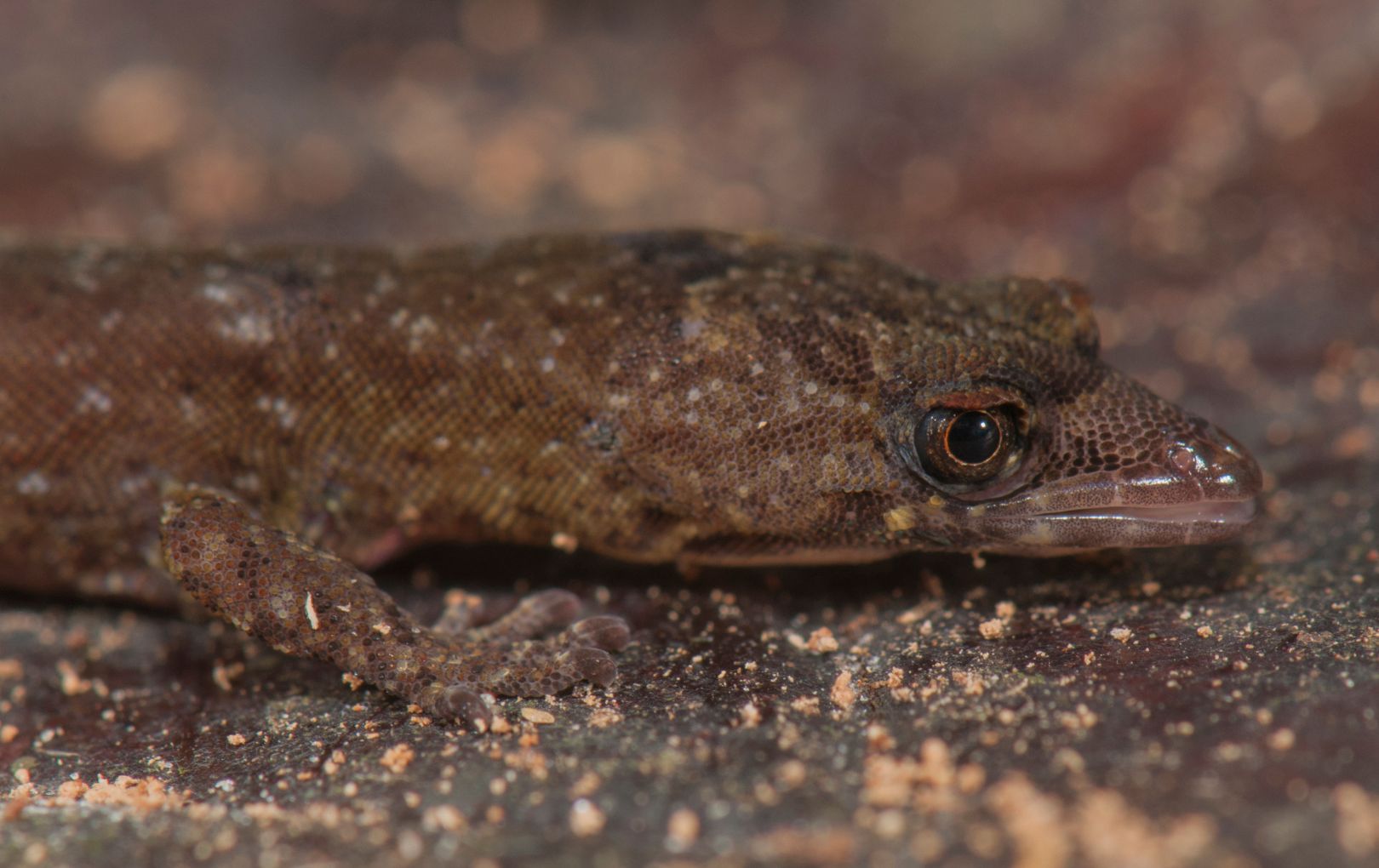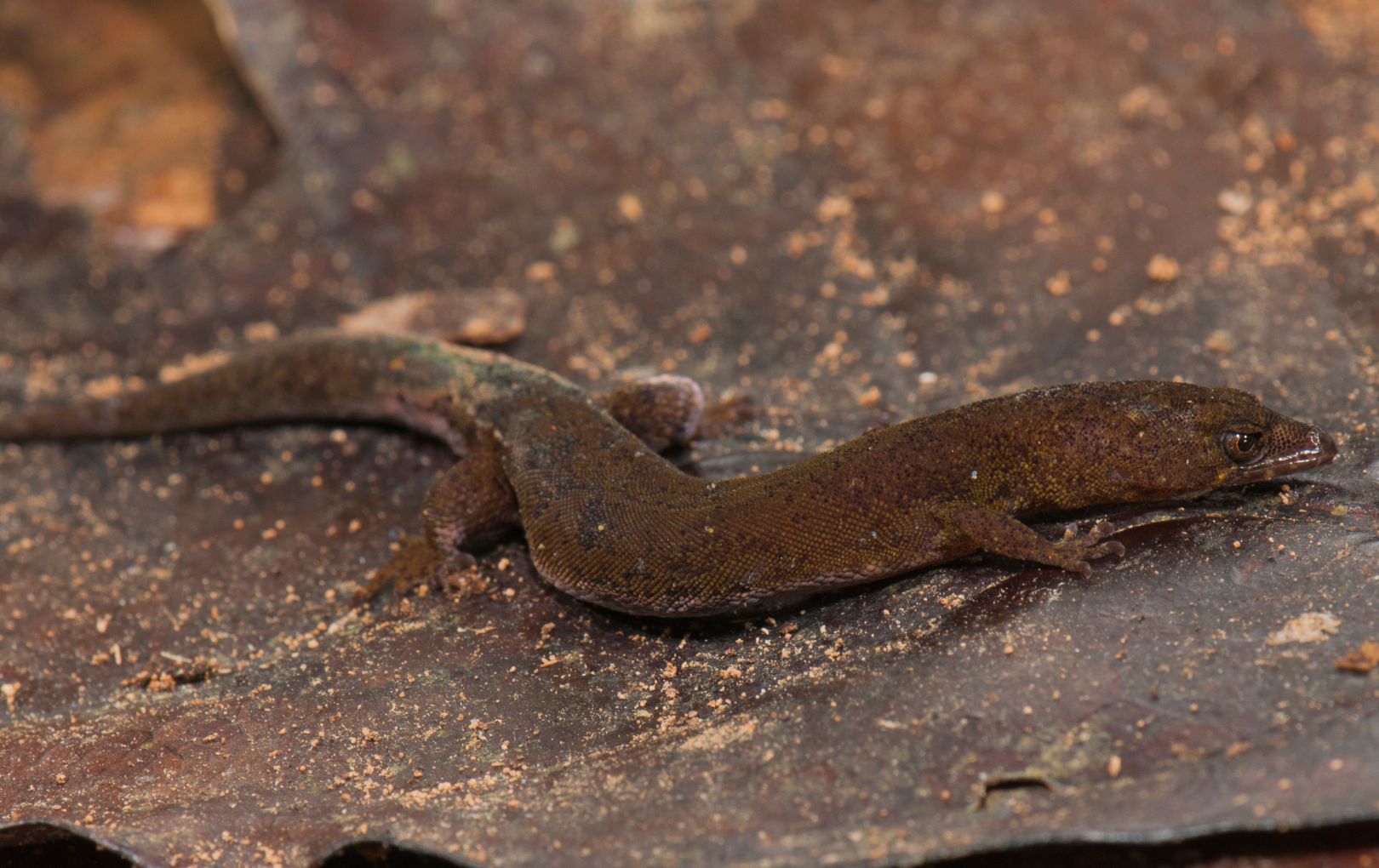UT Arlington biologist discovers new species of gecko
Monday, Nov 11, 2024 • Katherine Egan Bennett : contact

A team of biologists led by The University of Texas at Arlington has discovered a new tiny lizard species in the Paria Peninsula of northeastern Venezuela. This discovery, published in the Zoological Journal of the Linnean Society, highlights the unique characteristics of this gecko, including its small size (about 2.5 inches long), brown color, cone-shaped head, long snout and particular skull anatomy.
The new species, Pseudogonatodes fuscofortunatus, was identified through a combination of visual examination, molecular genetics and high-resolution X-ray computed tomography (CT) scans. Part of what makes this gecko unique is its distinct skeletal features, including fully separated nasal bones and fused parietal bones—uncommon traits among similar geckos. These characteristics, along with genetic data, distinguish it from other species within the genus Pseudogonatodes.

The discovery was made during fieldwork in the evergreen forests of the slopes of mountains in the Paria Peninsula, an area in northeastern Venezuela that juts into the Caribbean Sea and is known for its high biodiversity, moderate temperatures and lush vegetation. The researchers collected specimens in 2002 and again in 2014, noting the gecko’s unique skull structure, which led to further investigation. The species name, fuscofortunatus, reflects the brown coloration of the gecko and the fortunate circumstances of its discovery.
“The Paria Peninsula, part of the Coastal Mountain Range of Venezuela, has been a hotspot for reptile and amphibian discoveries in recent decades,” said the study’s lead author Walter E. Schargel, a professor of instruction in biology and earth and environmental sciences at UT Arlington. “The region’s complex geography and climate create diverse habitats that can support a wide range of species. The new gecko species adds to the growing list of reptiles that live only in this area, emphasizing the need for continued exploration and conservation efforts in the region.”

The research team included experts from various institutions in the United States, Portugal, Spain, Brazil, Colombia and Venezuela. Their collaborative efforts and combined field observations, museum specimen comparisons, DNA sequencing and advanced imaging techniques led to a comprehensive description of the new species.
“This discovery not only enriches our understanding of the biodiversity in this part of Venezuela, but it underscores the significance of preserving these unique ecosystems,” said Dr. Schargel. “I hope this discovery fuels increased conservation measures to protect the habitats of this rare species and other native species in the region.”
The study highlights the potential for further discoveries in the Paria Peninsula and similar areas, where many animal species remain undocumented. The use of modern technologies, such as CT scanning and molecular genetic analysis, play a crucial role in uncovering the hidden diversity of life on Earth, offering new insights into the evolutionary history and ecological adaptations of these fascinating creatures.
***
Funding for the project came from the U.S. National Science Foundation, a Biodiversity Consultancy grant through Oro Verde and Fundacion Proyecto Paria, the EDGE program of the Zoological Society of London, and Fondation Segre.
About The University of Texas at Arlington (UTA)
Located in the heart of the Dallas-Fort Worth Metroplex, The University of Texas at Arlington is a comprehensive teaching, research, and public service institution dedicated to the advancement of knowledge through scholarship and creative work. With an enrollment of approximately 41,000 students, UT Arlington is the second-largest institution in the UT System. UTA’s combination of outstanding academics and innovative research contributes to its designation as a Carnegie R-1 “Very High Research Activity” institution, a significant milestone of excellence. The University is designated as a Hispanic Serving-Institution and an Asian American Native American Pacific Islander-Serving Institution by the U.S. Department of Education and has earned the Seal of Excelencia for its commitment to accelerating Latino student success. The University ranks as the No. 1 national public university in the U.S. for veterans (Military Times, 2024), No. 4 in Texas for advancing social mobility (U.S. News & World Report, 2025), and No. 6 in the United States for its undergraduate ethnic diversity (U.S. News & World Report, 2025). UT Arlington’s approximately 270,000 alumni occupy leadership positions at many of the 21 Fortune 500 companies headquartered in North Texas and contribute to the University’s $28.8 billion annual economic impact on Texas.
Latest News
- UTA comes together for Thanksgiving Dinner traditionThe annual feast served over 700 Mavericks
- Enhancing prep of future bilingual science teachersCollege of Education receives national grant to enhance bilingual science pedagogy
- UTA expands tuition and fees reimbursement programBlaze Forward program makes UTA education more attainable for students
- UTA named top public university for veterans in TexasMilitary Times ranked UTA as a top five school for the fifth year in a row
- School social workers an underutilized resourceAs mental health challenges in children increase, schools struggle to best deploy social workers into the field
- UTA recognized for innovation and economic prosperityDesignation from APLU recognizes University’s economic development leadership






